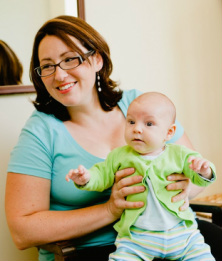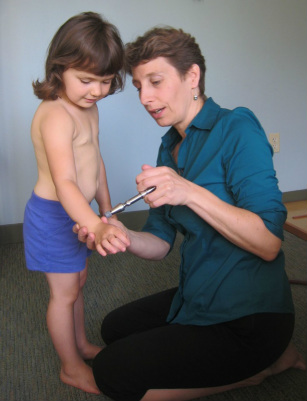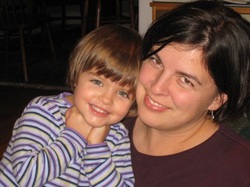Children
FOR CHILDREN, structural instability in the core of the body does not usually result in pain. Chronic pain in childhood is rare (but when it does occur, this is a strong indicator of structural instability). More often, an unstable biomechanical structure results in one or more of the following:
Infants and Toddlers

Mother with baby patient
- unequal use of left and right sides of the body
- turning the head or rolling to one side more than the other
- inertia – lowered motivation for movement
- developmental delays: slow to roll over, sit up, crawl, walk, or use language
- poor reflexive movements: suck, swallow, breathe, startle, coordinating eyes/ears/hands, etc.
- awkward crawling, hitching along, not using legs evenly
- leg length discrepancy
Preschoolers and older children

Dr. Lydia Knutson with 4 year old patient
- history of the signs listed above during infancy
- one shoulder or hip lower than the other
- scoliosis
- habitual head tilt
- leaning to one side in a standing or seated position
- delayed milestones or awkward motor skills
- inability to skip or jump, stand or hop on one leg
- clumsiness or poor balance
- low muscle tone
- squirmy, constantly needing to shift position while seated or standing
- sensory integration and processing disorder
- vision issues
- poor school performance, difficulty reading or writing
- poor immunity, digestion or elimination
- rigid behaviors - resistance to toilet training, dressing, etc.
- quick to anger, easily frustrated, unexplained fears
- headaches or chronic pain of any kind
Preventive Care

Mother with 3 year old
Treating children is also excellent preventive care! A short series of visits to the chiropractor early on in a child's life is good medicine. Not only does the child get the benefit of a nervous system under less stress, but they also avert future discomfort. Early structural injuries, if left untreated, often develop into chronic aches and pains later on in adulthood.
